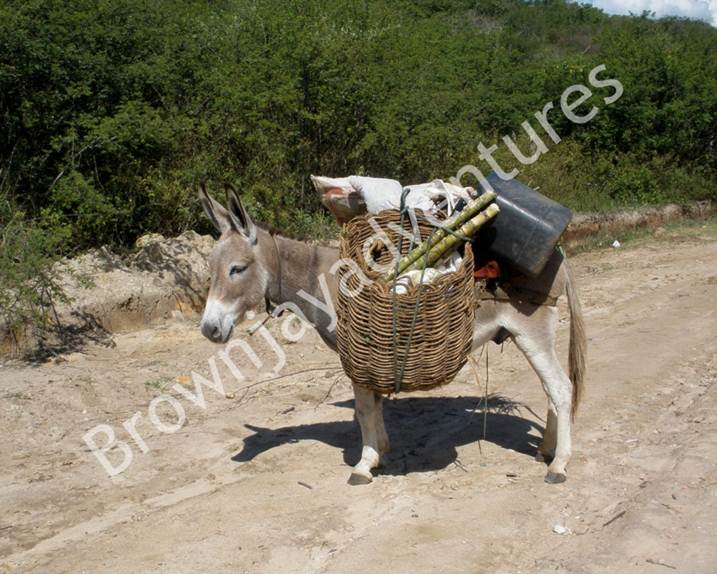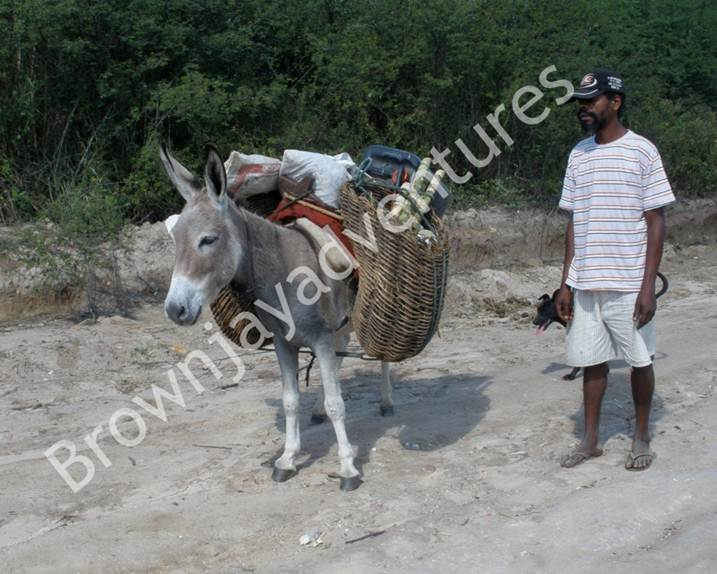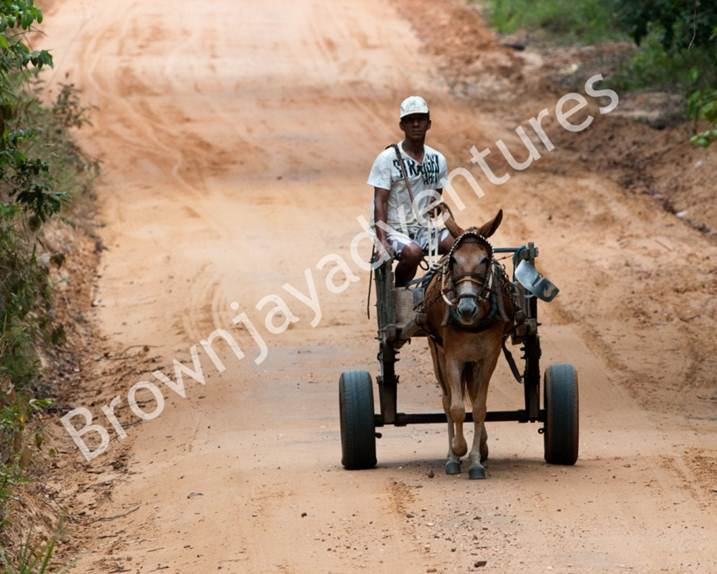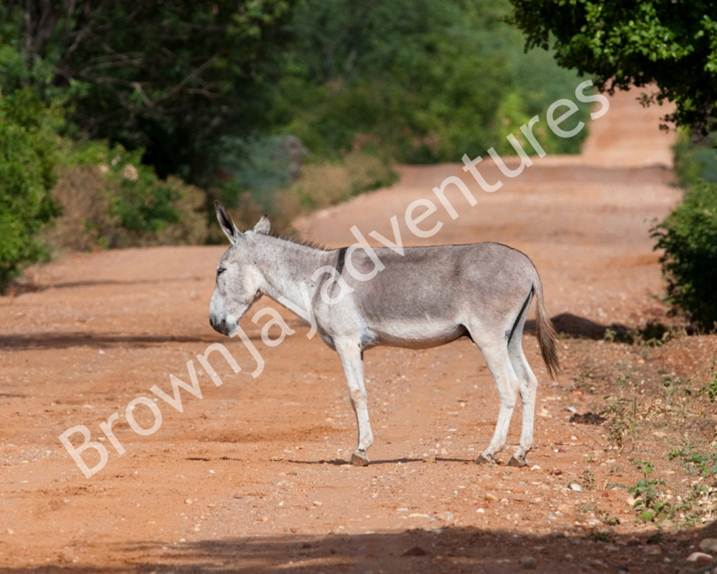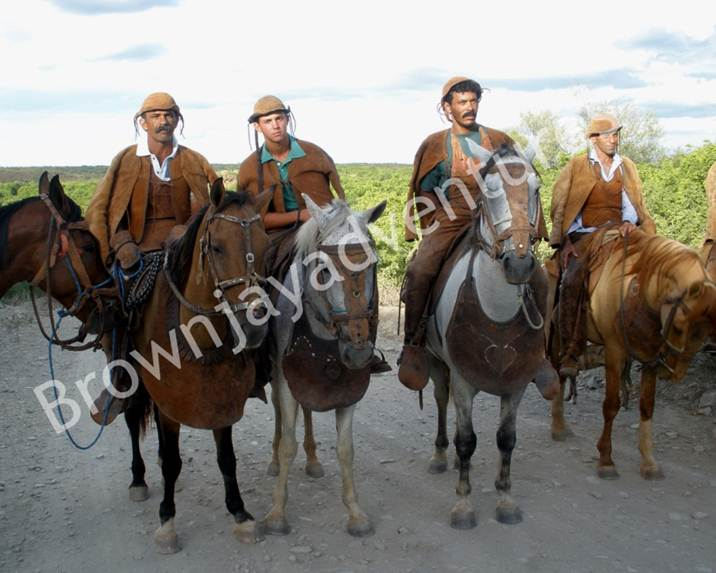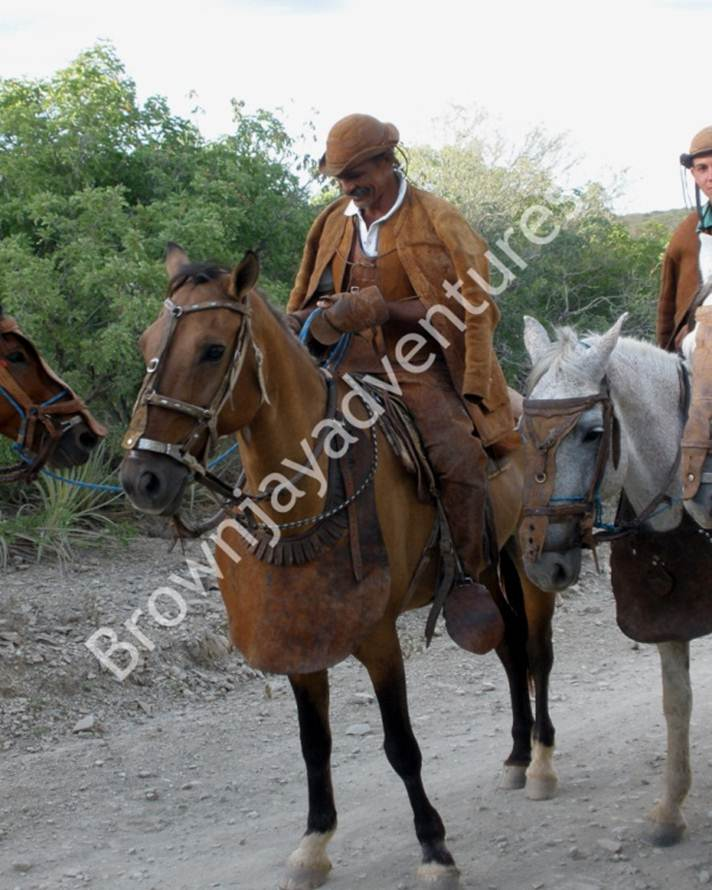Donkeys in BrazilRick Brown kindly allowed me the use of the following photos. These donkeys live and work in the right environment for their species. Note the perfect body condition and the beautifully worn hooves. Compare that to many of our pet donkeys like for example Cody or Lilly on the Hooves – Case Histories page. The above link will bring you to the original photos and Rick’s comments for each. I will copy and paste his comments here for ease of viewing. My comments will be italicized. Donkey This poor little donkey loaded with baskets etc in the hot afternoon sun. My comments: while this little guy does seem heavily burdened, he also appears very unfazed by it. Note the beautifully worn hooves.
Donkey and Locals This poor little donkey loaded with baskets etc in the hot afternoon sun. We all took photos of the owner and donkey as this is something you don't see here at home. My comments: same donkey as above, again look at his patient and relaxed expression and the beautiful hooves.
Common Mode of Transportation Along many of the back roads a common mode of transportation was a horse or donkey pulling a cart.
Donkey Beside the Road The area of Brazil was called Caatinga which was very arid and dry with cactus and many trees with thorns. Along this road to Boa Nova I saw horses, cows, donkeys and goats some had died at the side of the road which was very depressing to witness. My comments: while this donkey actually looks somewhat undernourished, this state is much healthier for them than the commonly seen obesity in pet donkeys. Again, note the perfectly worn hooves.
Caatinga Horses & Riders They told us that one of their bulls got out and they were searching for it before it got dark. This looks like something out of the movies, truly something to see. My comments: note the beautifully shaped and worn bare hooves.
Caatinga Horses & Riders On one of our return trips to the hotel we came across these cowboys of the Caatinga. It was 95 to 100 degrees F and if you notice, everyone, including the horses are wearing leather which protects them from the thorns. They must have been very hot with leather hats, coats, coverals, and gloves.
|
